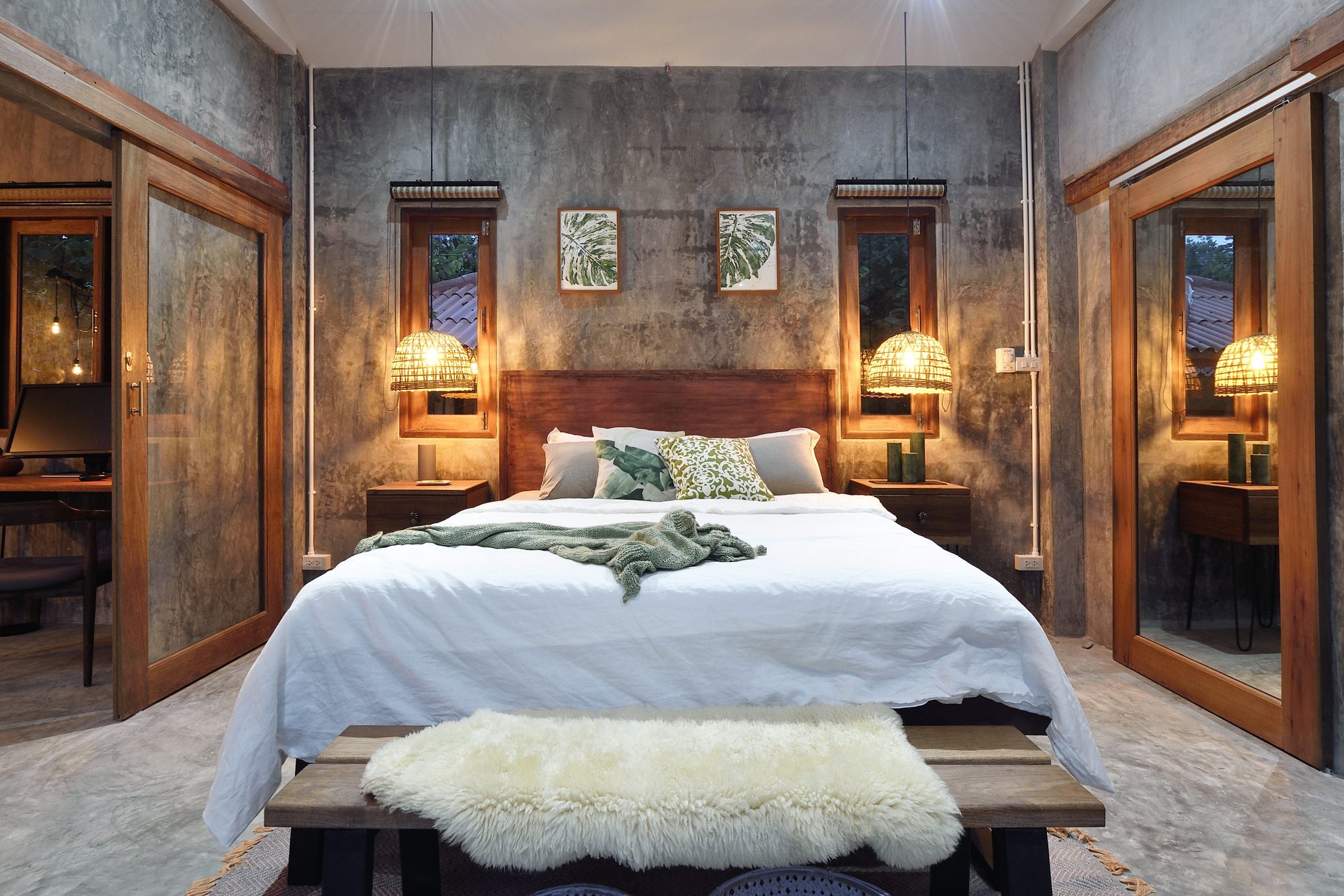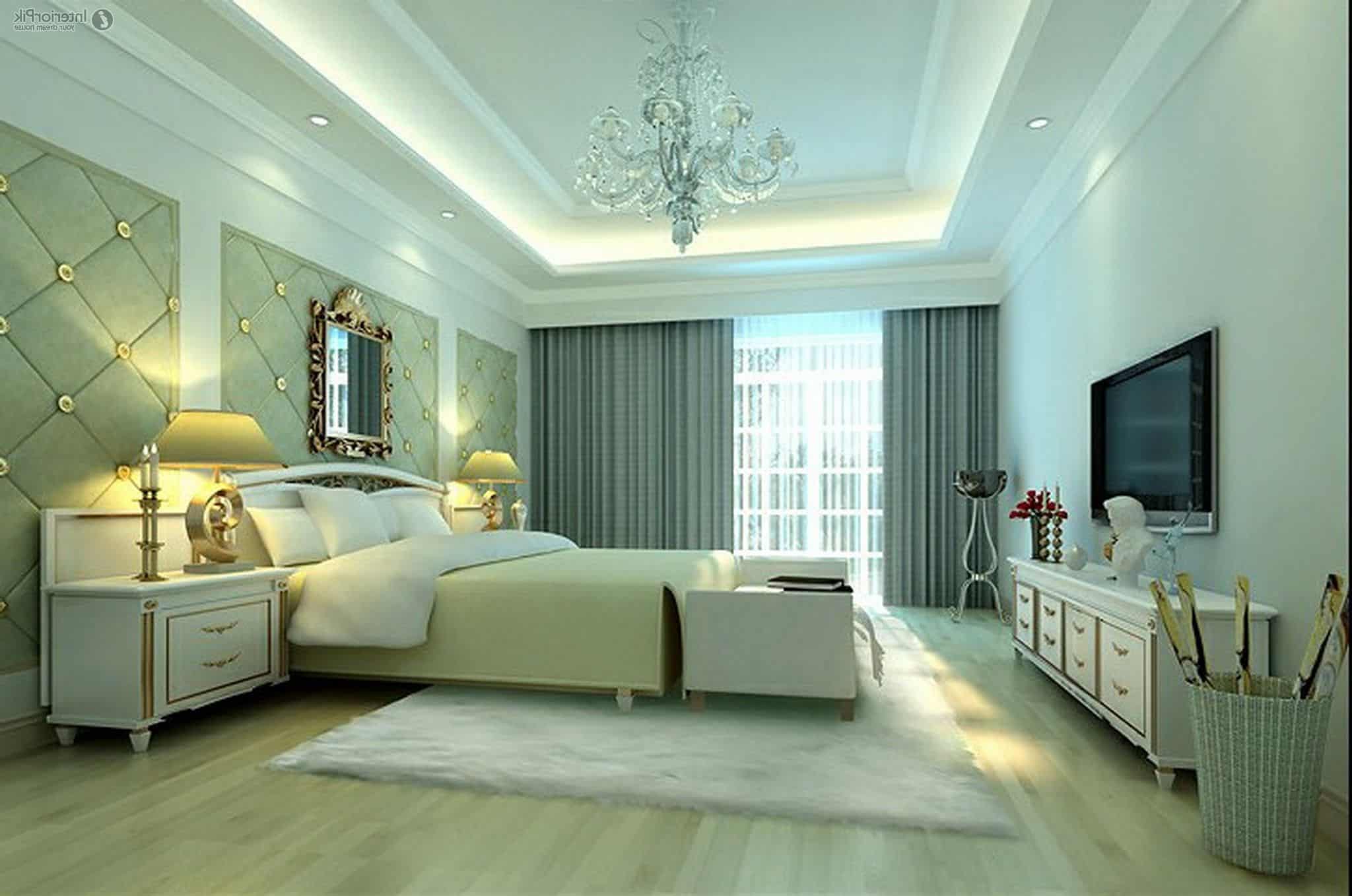The Appeal of Recessed Lighting in Master Bedrooms

Recessed lighting, also known as “can lighting,” is a popular choice for master bedrooms because it offers a blend of functionality, aesthetics, and ambiance. Its discreet installation allows for a clean, modern look while providing ample illumination for various activities.
Benefits of Recessed Lighting in Master Bedrooms
Recessed lighting enhances the master bedroom’s overall mood and atmosphere by creating a sense of spaciousness and sophistication. It provides a more even distribution of light compared to traditional overhead fixtures, reducing harsh shadows and creating a more inviting ambiance. The ability to control the light’s direction and intensity allows for customization to suit different activities, such as reading, getting ready in the morning, or relaxing in the evening.
Types of Recessed Lighting Fixtures, Master bedroom recessed lighting
There are various types of recessed lighting fixtures available, each offering unique characteristics and applications.
Downlights
Downlights are the most common type of recessed lighting, emitting light directly downwards. They are ideal for general illumination and provide a clean, minimalist look.
Spotlights
Spotlights offer more focused illumination, allowing for highlighting specific areas or objects. They are often used to accentuate artwork, architectural features, or create visual interest in the room.
Track Lighting
Track lighting provides flexibility and versatility, allowing you to adjust the position and direction of the lights. It is an excellent option for showcasing artwork, creating different lighting moods, and highlighting specific areas of the room.
Master Bedroom Layout with Recessed Lighting
Recessed lighting can be strategically incorporated into a master bedroom layout to create distinct zones and highlight key features.
Example Layout
- Reading Nook: A recessed spotlight positioned above a comfortable armchair or reading chair can create a focused and inviting reading space.
- Dressing Area: Downlights strategically placed around a dressing table provide ample illumination for applying makeup and getting ready.
- Bedside: Recessed lights on either side of the bed offer soft ambient lighting for reading or relaxing in bed.
- Walk-in Closet: Recessed lights installed along the perimeter of a walk-in closet provide adequate illumination for organizing clothes and accessories.
Planning Your Recessed Lighting Installation

Planning the installation of recessed lighting in your master bedroom is crucial for achieving the desired ambience and functionality. It involves careful consideration of several factors, including placement, type, and the number of fixtures required.
Determining the Number and Placement of Fixtures
To ensure adequate lighting, it’s essential to determine the number and placement of recessed lighting fixtures. This process involves a few key steps.
- Calculate the Area: Start by calculating the square footage of your master bedroom. This will give you a baseline for determining the number of fixtures needed.
- Consider the Room’s Purpose: A master bedroom is used for various activities, including sleeping, reading, and getting ready. Consider how the room is used and plan the lighting accordingly.
- Determine the Desired Lighting Levels: Different activities require different lighting levels. For example, reading requires brighter light than sleeping. Aim for a minimum of 10-15 foot-candles of light for general illumination.
- Use a Lighting Calculator: There are numerous online tools and apps that can help you calculate the number of fixtures needed based on your room’s size and desired lighting levels.
- Visualize the Layout: Sketch out the layout of your master bedroom, including furniture placement. This will help you visualize the best locations for recessed lights.
- Consider the Ceiling Height: The ceiling height will influence the spacing of fixtures. Generally, fixtures should be spaced 4-6 feet apart for optimal coverage.
- Avoid Placing Lights Over Furniture: Avoid placing recessed lights directly over furniture, as this can create glare and shadows.
Choosing the Right Light Bulb Type, Wattage, and Color Temperature
Once you’ve determined the number and placement of fixtures, it’s time to choose the right light bulbs.
- LED Bulbs: LEDs are energy-efficient and long-lasting. They are also available in a wide range of color temperatures, making them versatile for various lighting needs.
- Halogen Bulbs: Halogen bulbs provide a warm, white light that is ideal for creating a cozy atmosphere. They are also known for their high lumen output.
- CFL Bulbs: CFL bulbs are a good alternative to traditional incandescent bulbs, offering energy savings and a longer lifespan.
- Wattage: The wattage of the light bulbs will determine the brightness of the light. Use a lighting calculator to determine the appropriate wattage for your room’s size and desired lighting levels.
- Color Temperature: Color temperature is measured in Kelvin (K). Lower Kelvin values (2700K-3000K) produce warm, yellow light, while higher Kelvin values (4000K-5000K) produce cool, white light. Consider the mood you want to create when choosing the color temperature.
Considering Room Size, Ceiling Height, and Furniture Arrangement
The size of your master bedroom, ceiling height, and furniture arrangement will influence the lighting design.
- Room Size: Larger bedrooms will require more recessed lighting fixtures than smaller bedrooms.
- Ceiling Height: If you have high ceilings, you may need to use fixtures with a deeper housing to ensure proper illumination.
- Furniture Arrangement: Consider the placement of your bed, nightstands, dressing table, and other furniture when planning the recessed lighting layout.
Creative Applications of Recessed Lighting: Master Bedroom Recessed Lighting

Recessed lighting, with its ability to subtly illuminate and accentuate features, offers a unique opportunity to transform a master bedroom into a sanctuary of style and functionality. Beyond basic illumination, recessed lighting can be harnessed to create dramatic effects, enhance ambiance, and seamlessly integrate with other design elements.
Creating Dramatic Effects
Recessed lighting can be strategically placed to create dramatic lighting effects that enhance the overall ambiance of a master bedroom. Consider these techniques:
- Layering Light: Combining recessed lighting with other light sources, such as bedside lamps or a chandelier, creates depth and dimension, highlighting specific areas while casting soft shadows.
- Highlighting Architectural Features: Recessed lighting can be used to accentuate architectural features like crown molding, vaulted ceilings, or unique wall textures, adding visual interest and highlighting the room’s design elements.
- Creating Mood with Dimmers: Dimmers allow you to control the intensity of the light, creating a range of moods from bright and energizing to soft and romantic. This versatility allows you to adapt the lighting to your desired atmosphere.
Designing a Lighting Scheme with Dimmers and Smart Lighting Technology
Integrating dimmers and smart lighting technology into your recessed lighting scheme allows for a more dynamic and responsive experience.
- Dimmers for Ambiance: Dimmers offer a simple yet effective way to control the intensity of your recessed lighting, allowing you to create a variety of moods, from bright and functional to soft and romantic.
- Smart Lighting for Control and Convenience: Smart lighting technology allows you to control your lights remotely, schedule lighting routines, and even adjust the color temperature. This provides ultimate control and convenience, enabling you to personalize your lighting experience.
- Scene Setting with Smart Lighting: Smart lighting systems allow you to create custom scenes, such as “reading,” “relaxing,” or “movie night,” where specific lighting combinations are pre-programmed to enhance the desired ambiance.
Integrating Recessed Lighting with Design Elements
Recessed lighting can be effectively integrated with other design elements, enhancing their visual impact and creating a cohesive and stylish space.
- Accent Walls: Recessed lighting can be used to highlight accent walls, creating a focal point and adding depth to the room. The lighting can be positioned to cast shadows or create a subtle glow, drawing attention to the wall’s unique texture or color.
- Artwork: Recessed lighting can be used to illuminate artwork, enhancing its visual appeal and drawing attention to the piece. Strategically placed lighting can create a dramatic effect, emphasizing the artwork’s details and textures.
- Headboards: Recessed lighting can be incorporated into the headboard design, providing a soft and inviting glow behind the bed. This creates a cozy and relaxing atmosphere, ideal for reading or simply enjoying a quiet moment.
Types of Recessed Lighting Fixtures, Master bedroom recessed lighting
Recessed lighting fixtures come in various types, each with its own advantages and potential applications in a master bedroom.
| Type | Advantages | Applications |
|---|---|---|
| Recessed Downlights | Versatile, provide general illumination, energy-efficient, can be used in various ceiling types. | General illumination, accent lighting, highlighting architectural features. |
| Recessed Track Lighting | Flexible, adjustable lighting direction, ideal for highlighting specific areas or artwork. | Accent lighting, highlighting artwork, creating dramatic effects. |
| Recessed Wall Washers | Provide even illumination, ideal for highlighting walls or architectural features. | Accent lighting, highlighting walls, creating a soft and diffused glow. |
